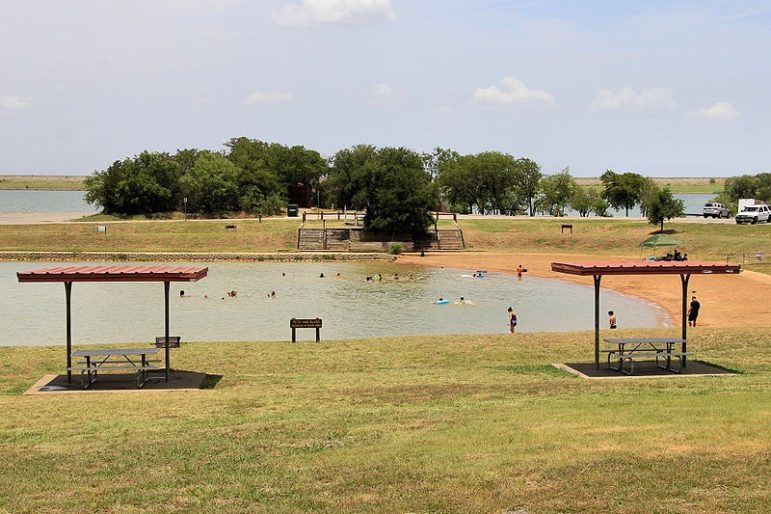
The journal Leisure Science published a report in June, “Bourdieu and African Americans’ Park Visitation: The Case of Cedar Hill State Park in Texas,” by University of Missouri scholar Kang Jae Lee. Lee interviewed black residents of different ages and varying incomes all living near Cedar Hill Park in Dallas, Texas. According to the Atlantic article, black communities make up more than 50 percent of the immediate area surrounding Cedar Hill Park, yet only 11 percent of those who visit each year are African Americans. Lee’s research found emotional, historical, cultural, and/or fearful barriers that block easy access to the 1,800-acre park.
Residents talked about traditions, culture, and generational messages that have been passed down, including possible feelings that parks are just not for the black community, as well as the traditional security of being at home with family. One respondent shared a feeling of “not belonging” at the park. Another said there was no encouragement to attend park activities.
Most revealing, however, are the possible connections to segregation that Lee’s research uncovered. Lee writes, “Power inequality may well provide insight into how historical racial discrimination has negatively affected African Americans’ access to parks.”
Lee’s findings, however, are not all new. Just this past March, Nonprofit Quarterly included similar findings in a report on diversity in national parks. Writer Alexis Buchanan cited a 2008–09 study of the National Parks stating that “Hispanics, Asians and African Americans were more likely than whites to see parks as unsafe, unpleasant, or providing poor service.” In addition, articles spread across major media outlets in 2010 and 2011 as concerns rose regarding minimal attendance of minorities reported by the National Park Service. The New York Times interviewed a former education specialist for the Park Service and associate professor of Recreation, Parks, and Tourism at San Francisco State University, Nina Roberts. Her research found that “many blacks were anxious about the people they might encounter in parks.” She gave an example of a 19-year-old who was told by her granddaddy that the KKK “[hung out]” in the mountains and said that it is a “wariness that gets passed on through the generations.”
Similarly, a report from NPR shared:
Sign up for our free newsletters
Subscribe to NPQ's newsletters to have our top stories delivered directly to your inbox.
By signing up, you agree to our privacy policy and terms of use, and to receive messages from NPQ and our partners.
For many African Americans, especially those of an older generation, being outside brings up concerns about safety. Autumn Saxton-Ross leads Outdoor Afro events around Washington, D.C. Growing up, her grandmother used to take her to Watermelon Hill in Kansas City’s Swope Park. Until desegregation, it was the only place in the park that black people were allowed to visit. With that history in mind, Saxton-Ross’s grandmother wouldn’t take her to other parts of the park, even in the 1980s, long after segregation had ended, for fear that something bad might happen.
That uneasiness contributed to the view of outdoor recreation as “white,” a feeling that was often passed down to younger generations. But the “black people don’t do nature” stereotype is just not accurate, says Saxton-Ross. Even if they don’t realize it, African-Americans have had a connection to the outdoors for most of their lives, be it fishing holes or a backyard barbecue pit. For many Outdoor Afro volunteers, their favorite outdoor place growing up was their grandparents’ backyard. “It’s important for us to remember that nature is really anything outdoors,” says Saxton-Ross. “It’s not just big spaces like Yosemite.”
A 2009 survey of attendance at Yosemite found that just one percent of their visitors were black, which paints a picture of the work ahead. Rue Mapp, the founder of Outdoor Afro, a network created to encourage and inspire African Americans to enjoy nature, has taken on a major project that has since expanded to 28 states. In addition to the work of Outdoor Afro, the National Park Service has announced goals to diversify both their visitors and workforce leading up to this year’s centennial.
More than just leisure and play, parks can play a crucial role in the health and unity of a community. Stanford University found that simply walking in nature might have mental and physical health benefits compared with walking in urban settings. For minority populations, which carry a higher burden of poor health outcomes year after year, the lack of access to an improved quality of life is an important gap that warrants serious attention.
However, more disturbing is the understanding that a segment of our population does not feel accepted, safe, or welcome in a public space. These reports and studies suggest an invisible wall surrounds our parks, regardless of their location. This is a daunting challenge that, at minimum, will require leaders to look at things differently, support cultural sensitivity, and make diversity a priority.—Michelle Lemming












